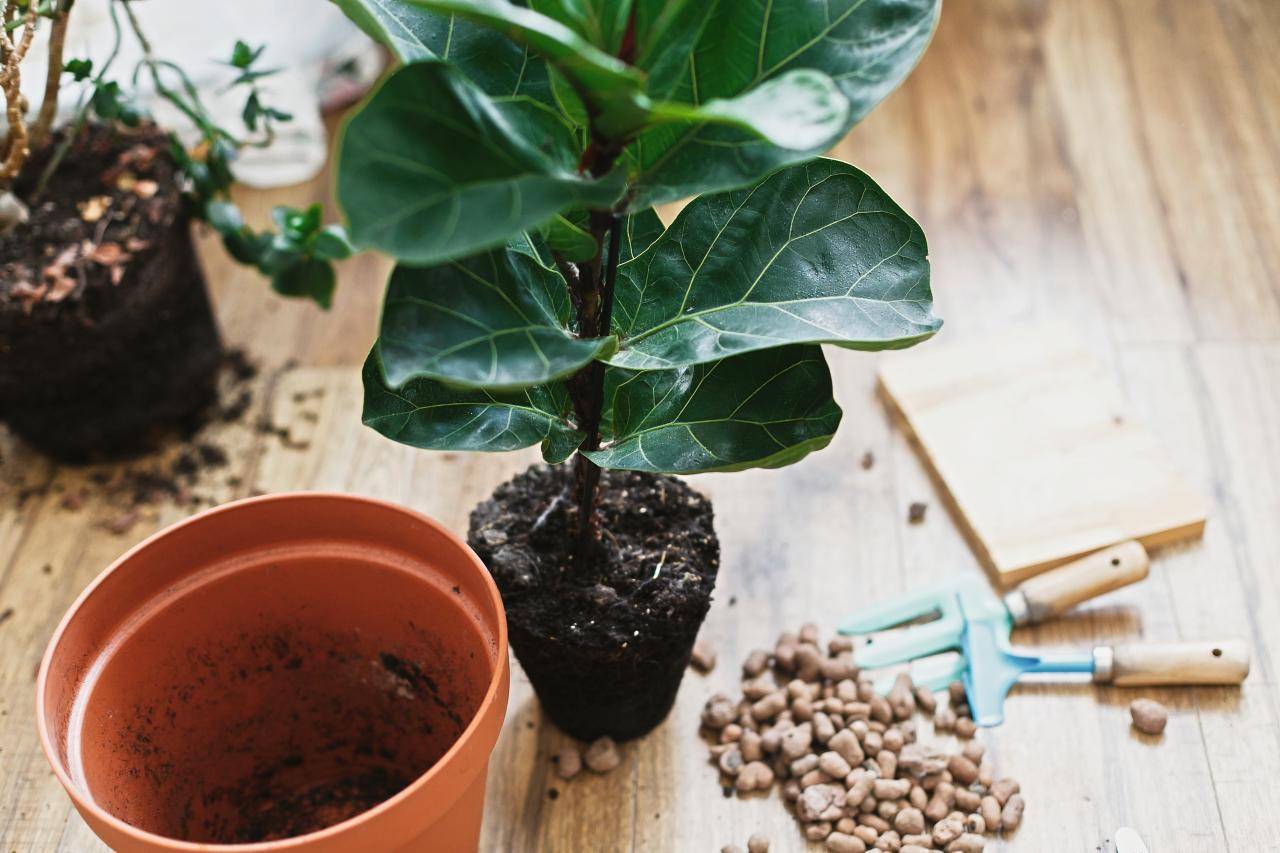
The Fiddle Leaf Fig Tree (Ficus lyrata), which is a gorgeous plant with enormous green leaves and a sizable fan base among lovers of houseplants, is a native of the rainforests of western and central Africa. Despite its popularity, it's not the simplest houseplant to maintain, but when given the right environment and care, it has an unrivaled aesthetic effect on a space.
Fiddle leaf figs can grow many feet each year if properly cared for. At home, these common houseplants can reach up to 6 feet or more. This plant is a top pick for entertainment spaces because of its glossy, green foliage and distinctive form.
Due to their enormous size, fiddle-leaf fig trees are typically used as floor plants. When they are young and small, younger fiddle leaf figs can temporarily live on shelves. The conventional fiddle leaf fig also comes in smaller, bushier cultivars called F. lyrata compacta and suncoast, but the primary F. lyrata type is the one you're most likely to encounter.
Care Advice for Fiddle Leaf Figs
Fiddle leaf figs have a reputation for needing particular handling. Nevertheless, taking care of your tree isn't as difficult as some would believe! Check out our fiddle leaf fig care advice to become the trendiest plant parent around.
Light
Lots of bright, filtered light is preferred for fiddle leaf figs. To ensure that your fiddle leaf fig receives plenty of sunlight throughout the day, place it close to a bright, east-facing window.
When you see your fiddle leaf fig plant straining for the light, rotate it every few months for the best fiddle leaf fig care. To keep your fiddle leaf fig tree's leaves clean and to help the plant in effectively absorb more sunshine, wipe them off once a week. This is crucial for this plant in particular because of its huge, dust-prone leaves.
Water
Fiddle Leaf Figs need to be properly watered about once a week to match their love of natural light. You should change the quantity of watering based on the size of the plant and, therefore, the size of the roots.
The leaves of a submerged fiddle leaf fig will droop and become brown around the edges. A fiddle leaf fig that has received too much water will have dark brown patches and edges on its leaves in addition to an unpleasant odor that lingers close to the earth. These watering errors can be fixed by either watering less or, if it has been overwatered, by repotting in new soil. If it's submerged, you might water it more. Any irrigation errors should be fixed right away because unattended issues might lead to holey leaves!
Temperature
These plants enjoy warm, muggy conditions similar to that found in the rainforests of their native regions. Keep your fiddle leaf figs in spaces that are 65 to 75 degrees Fahrenheit. They shouldn't be kept in a space that is cooler than 50°F since they will begin to have brown patches. You can place additional plants close by or place the plant on top of a tray of gravel to boost humidity.
Moreover, fiddle leaf figs are vulnerable to strong winds. Place them safely away from air conditioning units and other draft sources, and keep the surrounding windows tightly closed. Their leaves may dry out with excessive exposure and fall off. Additionally, you should avoid moving them until essential as any abrupt adjustments may also cause their leaves to drop.
Pests and Problems
Fiddle Leaf Figs need some routine care, much like most other plants. One crucial maintenance procedure for your fiddle leaf coincidentally involves its leaves, which are also its most noticeable feature.
Fiddle leaf figs are susceptible to scales, mites, aphids, and mealy bugs. Look for any unusual growths or holes in their leaves, and inspect the underside for any little bugs. If you come across any of these undesirable creatures, remove them with a hot, soapy cloth or a light pesticide. Care for leaf figs can be challenging since some issues grow rapidly if ignored.
Winter Care for Fiddle Leaf Fig
Winter is a challenging season for indoor plants, including fiddle leaf figs, because of the obvious lack of natural light and the cooler temperatures. As indicated above, keeping an eye out for cold windows is a smart place to start, but there are other things you can do to keep your fiddle leaf content throughout the chilly months.
People frequently experience problems with heating vents in the winter since they are often forgotten about because they aren't used for more than half the year. Plan to relocate all of your plants away from any heating vents when it is time for them to turn on. Repeated hot air bursts have the potential to scorch leaves and quickly dry out your plants.
Important details:
-
Fiddle leaf figs thrive when put right in front of a window and require a lot of natural light.
-
Once a week, thoroughly water the soil, letting the top few inches dry out before watering again.









